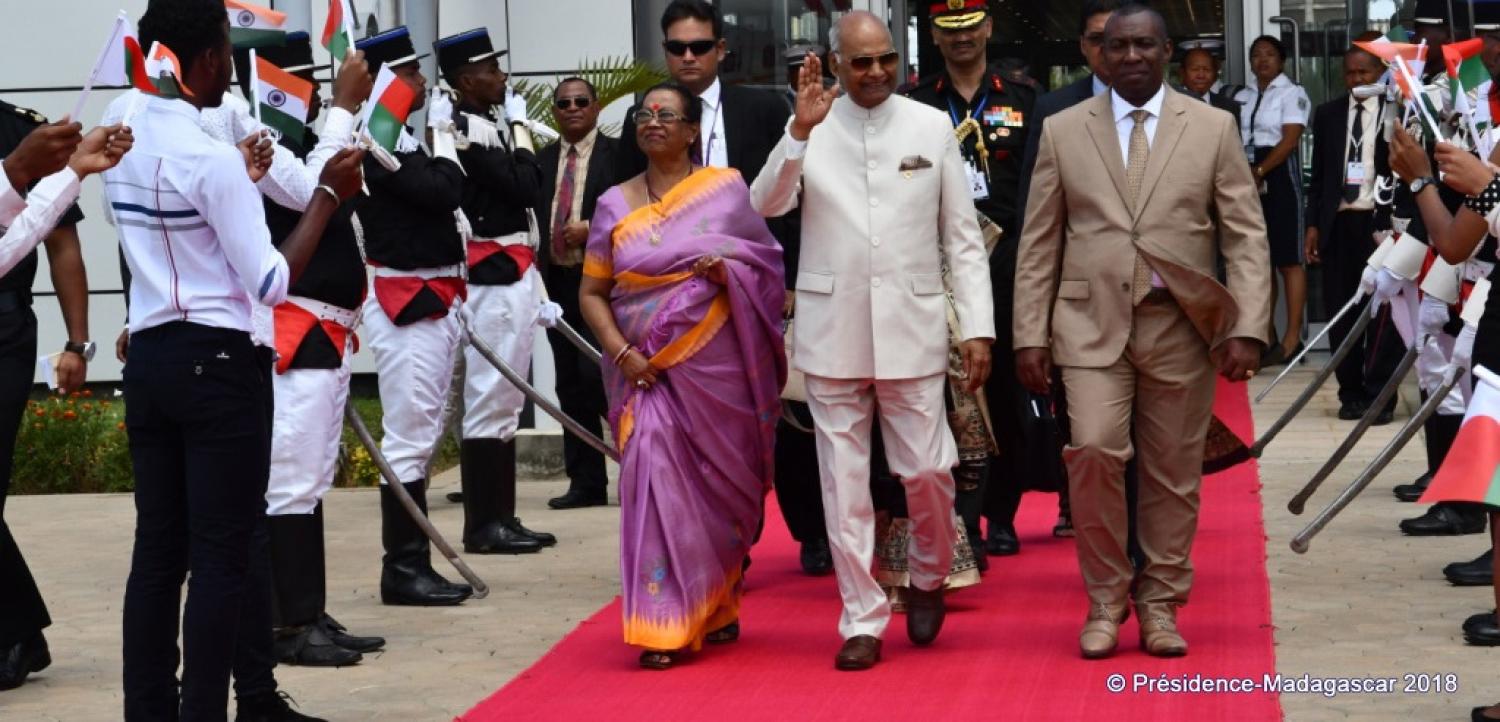In 2017, the “Indo-Pacific” emerged as a defining geopolitical construct tying the future of states from East Africa to East Asia together with big powers, such as the US, China, India, and Japan.
While Beijing has grabbed headlines in its quest to dominate the eastern part of this integrated system in the South China Sea, in the western Indian Ocean it has managed to escape the constraints of geography, building influence and infrastructure that could lead to political, ethical, and ideological control over the Asian littorals.
In the western Indian Ocean, a battle for the soul of the Indo-Pacific is set to play out between China and the liberal order hitherto led by the US, and increasingly represented by India. While New Delhi and Beijing have initiated a tentative rapprochement, their interests do not align.
Despite Indian Prime Minister Narendra Modi and Chinese President Xi Jinping’s bonding at Wuhan a few days ago, it is clear that China’s “non-market” economics and military activism is beginning to shrink India’s strategic space in the western Indian Ocean.
Last month, the Maldives returned a gift helicopter to India, signalling a drift away from New Delhi and into Beijing’s embrace. Seychelles has failed to ratify an agreement with India on the construction of a military facility at Assumption Island, only weeks after Indian Foreign Secretary Subramanya Jaishankar signed a revised pact for its development, including the construction of an airstrip and a jetty for the Seychelles Coast Guard and Indian Navy. And Sri Lanka is handcuffed in a perverse relationship with the Middle Kingdom.
Yet with limited means and an economy less than a fifth the size of China’s, Delhi is displaying the gumption to fight back. President Ram Nath Kovind’s visit to Mauritius and Madagascar last month was perhaps evidence of India’s response to China’s challenge in the East African and West Asian littorals.
During a soft-power tour to boost India’s ties with Africa, Kovind committed a $100 million line of credit for defence procurement by Mauritius. Besides offering a multipurpose offshore patrol vessel, New Delhi also promised enhanced cooperation with the Mauritian Coast Guard, even expanding India’s constabulary presence in the nation’s exclusive economic zone.
India’s priority in Mauritius is developing a new airstrip and jetty facilities on the islands of Agaléga, presumably for future use by the Indian Navy, which is set to assist in the installation of state-of-the-art telecommunications equipment.
In Madagascar, Kovind promised greater cooperation in the “blue economy” domain, including the promotion of sustainable fisheries, maritime connectivity, marine resource management, ecotourism, and pollution control. Recognising India’s role in preserving regional peace and stability, Madagascar sought greater cooperation with the Indian Coast Guard and Navy.
Meanwhile, the maritime partnership with Mozambique remains in robust health. In February, New Delhi agreed to increase the training of military personnel and upgrade defence equipment and infrastructure, including medical facilities and hydrographic surveying of Mozambique waters.
The Indian Navy, which provided waterfront security during the African Union Summit in 2003 and the World Economic Forum meeting in 2004, considers Mozambique an indispensable strategic partner. In 2015, India even resurrected a dormant joint-defence working group with Maputo, expanding training and capacity-building aid to Mozambique’s intelligence service.
Many see the blossoming of Indo-French maritime ties as the proverbial “game-changer” in New Delhi’s expanding Indian Ocean diplomacy. Paris, which signed a logistical agreement with India in March, has significant military presence in the western Indian Ocean. This pact, signed during President Emmanuel Macron’s visit to India last month, promises access to French bases in Réunion Island, not far from the Mozambique Channel, and also at Djibouti, where China inaugurated a logistical outpost last year.
New Delhi wouldn’t be averse to the idea of military presence in East Africa if Japan allowed Indian troops to use its facility at Djibouti, the first overseas Japanese military base since the Second World War. Japanese hardware and Indian human resources would be a formidable combination and fitting complement to the Asia–Africa Growth Corridor being pursued by both countries.
Another encouraging development is New Delhi’s decision to post a defence attaché to the US military’s Central Command Headquarters in Bahrain. With an area of responsibility extending up to the Red Sea, Gulf of Oman, Persian Gulf, and Arabian Sea, Central Command exerts authority over naval operations in Afghanistan, Pakistan, and the oil-rich Gulf countries. It is also the lead player in anti-piracy and counterterrorist operations in the West Asian littorals.
If India’s new defence attaché in Bahrain facilitates better coordination and logistical support, the Indian and US navies could finally have a functional partnership in the western Indian Ocean.
But India still needs to combine its disparate partnerships in the West Asian littorals into a comprehensive strategy, placing trade and infrastructure connectivity at the heart of its maritime engagement. India must also convince partners such as the US, EU, and Japan of the strategic value in investing and engaging with this region in order to reduce regional economic dependence on Beijing.
Such an approach might also persuade Washington to abandon its schizophrenic approach to the Indo-Pacific, caused by dissonance in the posture and priorities of Central Command, Pacific Command, and Africa Command.
Both India and China realise that the normative and institutional architecture of the Indo-Pacific will shape the future international order. Ultimately, India’s engagement in the western Indian Ocean must not only protect its own economic, energy, and diaspora interests but also cohesively link with its “Act East” policy to preserve a rules-based order in the Indo-Pacific.
Whatever the costs, New Delhi must gear up for a sustained struggle to ensure openness, transparency, and a healthy balance of power in littoral Asia.

